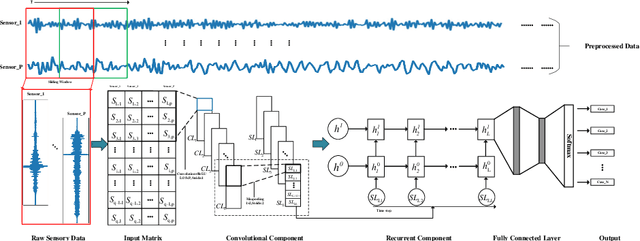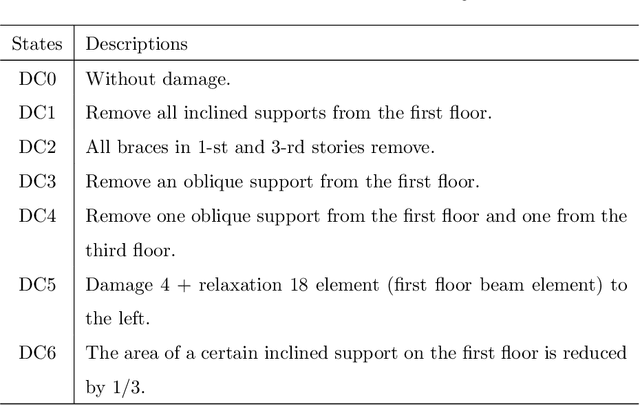Shixin Jiang
School of Information Science and Engineering, Chongqing Jiaotong University
Investigating and Enhancing the Robustness of Large Multimodal Models Against Temporal Inconsistency
May 20, 2025Abstract:Large Multimodal Models (LMMs) have recently demonstrated impressive performance on general video comprehension benchmarks. Nevertheless, for broader applications, the robustness of their temporal analysis capability needs to be thoroughly investigated yet predominantly ignored. Motivated by this, we propose a novel temporal robustness benchmark (TemRobBench), which introduces temporal inconsistency perturbations separately at the visual and textual modalities to assess the robustness of models. We evaluate 16 mainstream LMMs and find that they exhibit over-reliance on prior knowledge and textual context in adversarial environments, while ignoring the actual temporal dynamics in the video. To mitigate this issue, we design panoramic direct preference optimization (PanoDPO), which encourages LMMs to incorporate both visual and linguistic feature preferences simultaneously. Experimental results show that PanoDPO can effectively enhance the model's robustness and reliability in temporal analysis.
From Specific-MLLM to Omni-MLLM: A Survey about the MLLMs alligned with Multi-Modality
Dec 16, 2024Abstract:From the Specific-MLLM, which excels in single-modal tasks, to the Omni-MLLM, which extends the range of general modalities, this evolution aims to achieve understanding and generation of multimodal information. Omni-MLLM treats the features of different modalities as different "foreign languages," enabling cross-modal interaction and understanding within a unified space. To promote the advancement of related research, we have compiled 47 relevant papers to provide the community with a comprehensive introduction to Omni-MLLM. We first explain the four core components of Omni-MLLM for unified modeling and interaction of multiple modalities. Next, we introduce the effective integration achieved through "alignment pretraining" and "instruction fine-tuning," and discuss open-source datasets and testing of interaction capabilities. Finally, we summarize the main challenges facing current Omni-MLLM and outline future directions.
GUIDE: A Guideline-Guided Dataset for Instructional Video Comprehension
Jun 26, 2024Abstract:There are substantial instructional videos on the Internet, which provide us tutorials for completing various tasks. Existing instructional video datasets only focus on specific steps at the video level, lacking experiential guidelines at the task level, which can lead to beginners struggling to learn new tasks due to the lack of relevant experience. Moreover, the specific steps without guidelines are trivial and unsystematic, making it difficult to provide a clear tutorial. To address these problems, we present the GUIDE (Guideline-Guided) dataset, which contains 3.5K videos of 560 instructional tasks in 8 domains related to our daily life. Specifically, we annotate each instructional task with a guideline, representing a common pattern shared by all task-related videos. On this basis, we annotate systematic specific steps, including their associated guideline steps, specific step descriptions and timestamps. Our proposed benchmark consists of three sub-tasks to evaluate comprehension ability of models: (1) Step Captioning: models have to generate captions for specific steps from videos. (2) Guideline Summarization: models have to mine the common pattern in task-related videos and summarize a guideline from them. (3) Guideline-Guided Captioning: models have to generate captions for specific steps under the guide of guideline. We evaluate plenty of foundation models with GUIDE and perform in-depth analysis. Given the diversity and practicality of GUIDE, we believe that it can be used as a better benchmark for instructional video comprehension.
A Hierarchical Deep Convolutional Neural Network and Gated Recurrent Unit Framework for Structural Damage Detection
May 29, 2020



Abstract:Structural damage detection has become an interdisciplinary area of interest for various engineering fields, while the available damage detection methods are being in the process of adapting machine learning concepts. Most machine learning based methods heavily depend on extracted ``hand-crafted" features that are manually selected in advance by domain experts and then, fixed. Recently, deep learning has demonstrated remarkable performance on traditional challenging tasks, such as image classification, object detection, etc., due to the powerful feature learning capabilities. This breakthrough has inspired researchers to explore deep learning techniques for structural damage detection problems. However, existing methods have considered either spatial relation (e.g., using convolutional neural network (CNN)) or temporal relation (e.g., using long short term memory network (LSTM)) only. In this work, we propose a novel Hierarchical CNN and Gated recurrent unit (GRU) framework to model both spatial and temporal relations, termed as HCG, for structural damage detection. Specifically, CNN is utilized to model the spatial relations and the short-term temporal dependencies among sensors, while the output features of CNN are fed into the GRU to learn the long-term temporal dependencies jointly. Extensive experiments on IASC-ASCE structural health monitoring benchmark and scale model of three-span continuous rigid frame bridge structure datasets have shown that our proposed HCG outperforms other existing methods for structural damage detection significantly.
 Add to Chrome
Add to Chrome Add to Firefox
Add to Firefox Add to Edge
Add to Edge